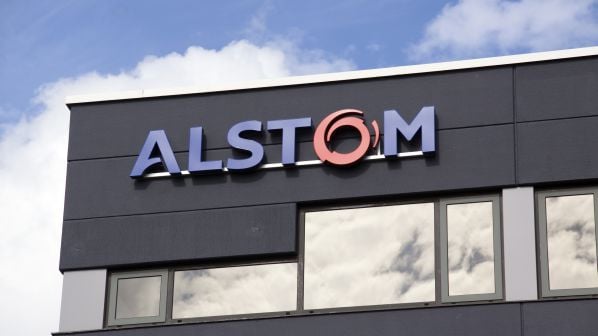Bombardier has everything Alstom could want in a partner: a global reach, a portfolio of reputable platforms, cutting-egde technologies, and a deep order backlog. Bombardier might have struggled a little recently, but like all good marriages, the couple are intent on working these problems out together.
But what of the congregation in this wedding between two of the world’s leading railway equipment suppliers?
As Alstom chairman and CEO, Mr Henri Poupart-Lafarge, reveals in my exclusive interview, he sees the battle with Chinese competitors not playing out on who necessarily has the best price. Instead, it will come down to which company is able to innovate best and possesses the agility to respond to new demands and evolutions in the market, in particular those defined by climate change.
Poupart-Lafarge believes Bombardier’s portfolio provides Alstom with the ammunition to accelerate this process. But even after the merger, according to SCI Verkehr’s most recent biennial study of the global railway market, CRRC remains the world’s number one rolling stock manufacturer, with revenues of €35.57bn in 2019.
The European Commission (EC) blocked the Alstom-Siemens Mobility merger in 2019 on the grounds of insufficient evidence of a looming Chinese threat in the European market. But with a bolthole in the former Vossloh Locomotives factory in Kiel secured since then, and with a growing number of small batch locomotive and EMU orders in eastern Europe, and passenger car orders in the North America, the Chinese are beginning to make inroads.
News last month that the Chinese government is set to focus more on what it has is a potential concern for CRRC.
CRRC is already a major supplier to the developing world. And with the lure of Chinese soft loans for rail projects in Africa, South America and throughout Asia, including for the government’s Belt and Road initiative, it is likely to continue to pick up contracts.
However, the bulk of its income comes from its home market. News last month that the Chinese government is set to focus more on what it has is a potential concern for CRRC. Although the network will continue to grow at a pace not seen anywhere else, and urban expansion is unlikely to slow, the pressure to boost overseas activities will build.
How about Alstom’s European rivals?
It could so easily have been Alstom-Siemens plotting global domination. But the German supplier looks likely to continue alone for now. Unlike Alstom and Bombardier, Siemens does not have the same global manufacturing base, with its major plants located in Germany and the United States. Yet it picked up some billion euro orders in 2020 from its most important customer, German Rail (DB), notably a deal for 400 bi-mode locomotives and an order for 30 high-speed trains.
Siemens also signed an MoU with Egypt’s Ministry of Transport last month under which it will supply 250km/h EMUs, locomotives, signalling and electrification for 1000km of new main line under development in the country in a deal potentially worth $US 3bn. Although precise details are yet to be confirmed - including whether Siemens will manufacture the trains at Egypt’s proposed rail manufacturing hub - it is a major coup for the supplier, and shows that it has ambitions beyond its usual habitat.
A big winner of the Alstom-Bombardier deal is Škoda. The EC requested that Alstom and Bombardier divest several product lines in order to secure its blessing for the tie-up, and Poupart-Lafarge revealed that Alstom is in exclusive negotiations with the Czech manufacturer over three: the Coradia Polyvalent multiple unit platform and the Reichshoffen plant in France; Bombardier’s Talent 3 regional train and associated activities at Hennigsdorf, near Berlin; and some interfaces and products from Bombardier’s onboard signalling units and train control management systems (TCMS). While Škoda told me that it will not comment while negotiations remain underway, they are one to watch.
Hitachi is another beneficiary as it is poised to pick up Bombardier’s very-high-speed activities, on which the manufacturers have partnered with ETR 400 for Italy since 2010, recently expanding into Spain with Ilsa. Hitachi seems to have stabilised the former activities of AnsaldoBreda since taking over the Italian company in 2015. It is also a major player in signalling through the activities of Ansaldo STS and has a firm footing in the British market from its base at Newton Aycliffe. It looks likely to retain a presence for the long-haul, as is typical with Japanese manufacturers.
Other European suppliers that have performed well in recent years and have slowly expanded their presence include Stadler and CAF, and to a lesser extent Talgo. These suppliers have been adept at picking up smaller batch orders. Indeed, Poupart-Lafarge says he expects them to continue to perform well in the market.
Likewise, Transmashholding is eyeing further expansion. While traditionally focused on Russia and the CIS, the Russian manufacturer has established itself in Argentina and South Africa, cleaning up Chinese orders that have gone awry, setting up shop with the goal of growing in these markets.
The order for 1300 coaches from Egypt was a major step forward. Manufacturing of many of these vehicles is underway at a newly-acquired site in Hungary. TMH hopes to use this as a base for supply and service orders in Europe and sees growing demand as the market is increasingly liberalised and more smaller operators enter the fray.
This also provides heart for other suppliers. Alstom is certainly stronger, but it can’t and won’t win every order. Also, by taking Bombardier out of the equation, there is one less competitor for these companies to worry about, potentially strengthening their chances of winning contracts. Alstom might hope to bag a complete tier of the wedding cake, but there will still be a slice for everyone else.

